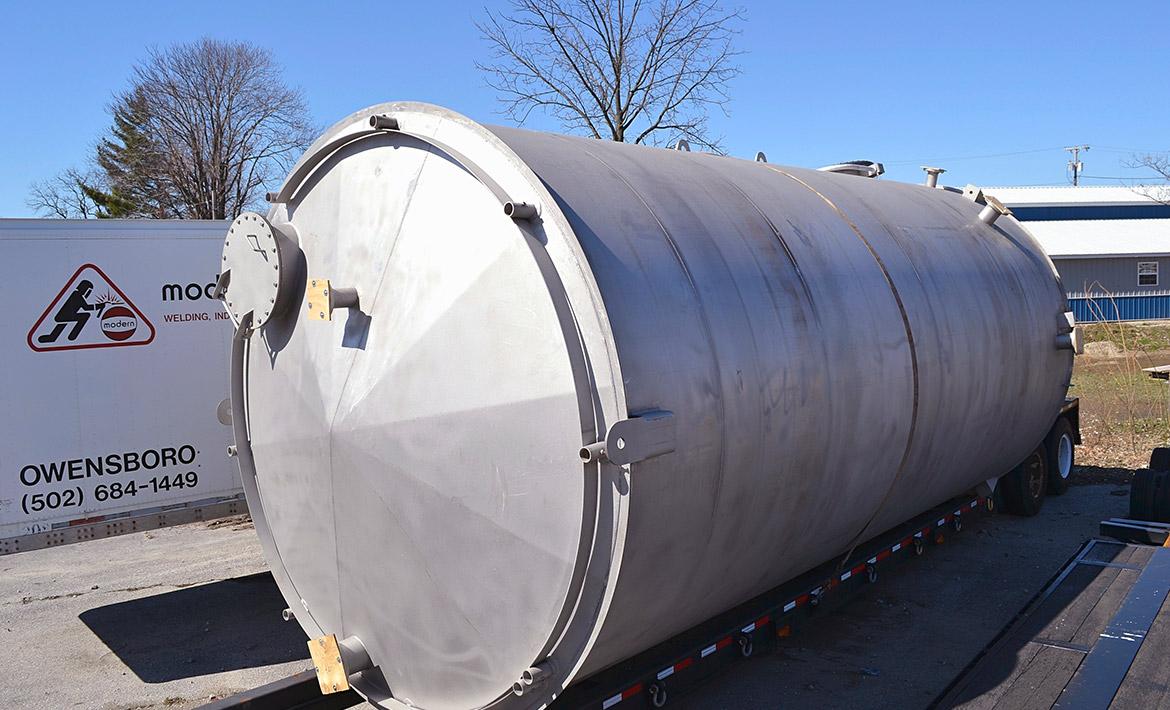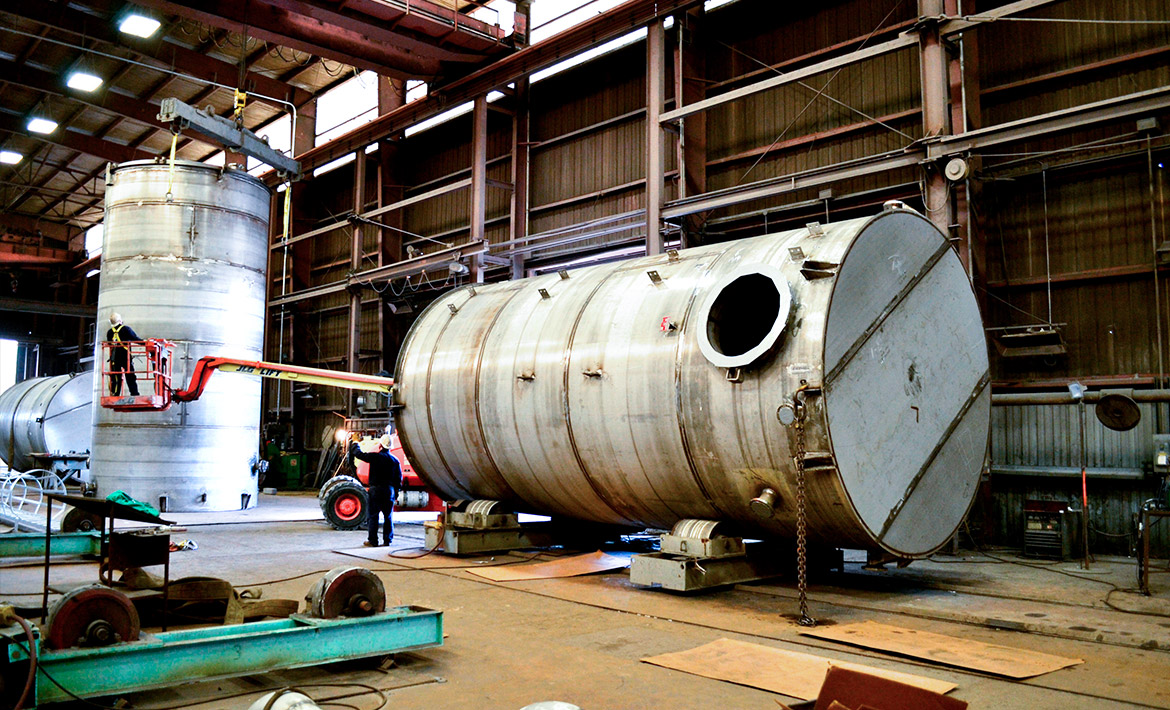How API 650 Welding Inspection Helps Prevent Defects and Maintains Reliability
Everything About Welding Inspection: Key Benefits for Your Jobs
Welding inspection plays an essential role in the building and manufacturing industries. It ensures that welded joints fulfill top quality and safety requirements. By identifying defects early, projects can avoid economic losses and substantial delays. Sticking to market standards not just protects the honesty of the last item however likewise builds depend on amongst stakeholders. Comprehending the nuances of this procedure exposes fringe benefits that can affect job results significantly. What are these benefits?
Comprehending the Welding Assessment Process
Although welding is a vital component in numerous industries, the examination procedure is important to assure quality and safety. This procedure entails a collection of methodical assessments designed to determine any type of possible issues that might jeopardize the stability of welded joints. Examiners assess welding procedures and credentials to validate compliance with market criteria.
Following this, aesthetic examinations are conducted to analyze the general look and finish of welds. Non-destructive testing techniques, such as ultrasonic or radiographic screening, may also be employed to identify inner flaws without damaging the product. Paperwork plays a vital function, as it supplies a record of evaluations and searchings for, confirming traceability and responsibility.
Eventually, comprehending the welding evaluation process promotes confidence in the quality of the finished product, minimizes the threat of failures, and improves total task success in various applications, from construction to manufacturing. API 650 Welding Inspection.
Typical Kinds Of Welding Problems
Welding defects can substantially impact the honesty and efficiency of welded structures, as they might lead to failures under stress and anxiety or damaging problems. Common types of welding issues consist of cracks, porosity, insufficient combination, and slag addition. Fractures can form due to thermal stresses or inappropriate cooling, compromising the joint's toughness. Porosity refers to the presence of gas bubbles entraped in the weld, which can deteriorate the joint and decrease ductility. Insufficient fusion takes place when the weld metal does not properly bond with the base product, resulting in weak places. Slag inclusion takes place when non-metallic pollutants come to be caught within the weld, bring about a reduction in architectural integrity. Recognizing these problems early via evaluation is crucial for preserving top quality and guaranteeing safety and security in welded frameworks. Understanding these typical issues enables boosted welding techniques and improved task outcomes.
Value of Conformity With Industry Specifications
Conformity with industry requirements is crucial for maintaining structural honesty in welding tasks. Following these requirements not just mitigates liability dangers yet also improves the general top quality of the ended up work. This alignment promotes depend on amongst stakeholders and warranties that projects meet both security and efficiency assumptions.
Making Certain Architectural Integrity
Guaranteeing structural stability is critical in any type of building or production task, as adherence to sector criteria functions as a structure for safety and security and integrity. Conformity with these criteria warranties that welding refines fulfill strenuous requirements, which is necessary for the durability of structures. Normal welding examinations validate that strategies and materials straighten with developed standards, stopping prospective failures that could endanger honesty. In addition, complying with market standards promotes consistency in quality, which is crucial for maintaining public count on building and construction methods. By prioritizing architectural stability through attentive adherence to criteria, organizations can enhance the total performance of their projects, bring about much safer environments and long term possession lifespans. Inevitably, this commitment reflects an aggressive method to quality control in welding practices.
Lowering Obligation Risks
Sticking to industry criteria significantly minimizes obligation threats connected with welding projects. Conformity with developed guidelines warranties that welds satisfy safety and security and performance standards, decreasing the chance of failures that can result in mishaps or lawsuits. This positive strategy not only secures the labor force however additionally safeguards the financial rate of interests of the firm. Low-grade practices or insufficient assessments can lead to expensive repair services, lawful disputes, and damage to online reputation. By implementing extensive welding assessments, firms demonstrate their commitment to high quality and security, inevitably minimizing exposure to potential insurance claims. In enhancement, adherence to laws reinforces trust among stakeholders and clients, as it suggests a commitment to keeping high criteria throughout the task lifecycle. Reducing responsibility risks is important for long-lasting company sustainability.
Enhancing Job High Quality
Extensive welding evaluations not only alleviate liability threats but likewise play a critical role in enhancing total task high quality. By adhering to sector criteria, these assessments ensure that welds meet defined criteria for stamina, sturdiness, and safety. Compliance with developed guidelines helps determine defects early, lowering the possibility of pricey rework or job hold-ups. Consistent high quality control cultivates count on amongst stakeholders, including clients and governing this bodies, which can lead to repeat service and favorable referrals. Inevitably, a commitment to premium welding techniques not only enhances the honesty of the end product however additionally upholds the track record of the company involved. As a result, detailed evaluations act as a keystone for effective and sustainable job end results.
Advantages of Very Early Detection of Problems
Early discovery of welding problems provides substantial benefits, particularly relating to price financial savings on repairs. By determining problems before they escalate, companies can boost the architectural honesty of their tasks. This aggressive strategy not just lessens monetary expenditures however also promotes safety and integrity in bonded frameworks.
Expense Cost Savings on Repair Works
Discovering welding problems immediately can lead to substantial price financial savings on repair work. Early identification of defects permits for targeted treatments, reducing the extent of damages and stopping expensive, extensive fixings later. When issues are addressed throughout the preliminary stages of a task, resources are made use of a lot more efficiently, lowering both labor and product costs. In addition, timely examinations can stop project hold-ups, which typically sustain extra expenses. By remedying issues early, firms can avoid the economic concern linked with rework, guarantee cases, and prospective safety and security risks. Inevitably, buying aggressive welding evaluations cultivates a more economical approach to job monitoring, guaranteeing that spending plans remain intact while keeping the quality and dependability of the last product.
Improved Architectural Integrity
Making sure the architectural integrity of welded elements rests on the prompt identification of prospective concerns. Early discovery during the welding evaluation process enables the prompt correction of issues such as cracks, spaces, or incorrect blend. Addressing these issues immediately not just boosts the toughness and resilience of the weld but additionally alleviates the threat of tragic failures during the service life of the structure. Regular evaluations contribute to a much more trusted analysis of weld top quality, ensuring compliance with industry standards. By focusing on welding inspections, project supervisors can keep a greater degree of safety and security and efficiency, eventually causing effective job results. Enhanced structural honesty reflects the dedication to top quality and adherence to ideal techniques in welding.
Cost-Effectiveness of Welding Inspections
While lots of business may see welding evaluations as an additional expense, they often confirm to be a cost-effective financial investment in the future. By determining problems early, visit this site these inspections can prevent pricey repair services or replacements that may develop from unnoticed issues. This aggressive technique not only saves cash however also decreases job delays, making certain that timelines are followed.

Additionally, high-quality welding assessments contribute to boosted efficiency, causing fewer rework instances and boosted productivity. The decrease in product waste and labor costs related to redoing defective welds includes to the economic benefits.
Investing in complete inspections likewise improves the total top quality of the end product, which can cause raised consumer fulfillment and repeat business. Eventually, the preliminary prices associated with welding evaluations are commonly surpassed by the long-term savings and benefits they offer, making them a smart option for any welding project.
Enhancing Security and Dependability in Welding Projects

Welding assessments play a necessary function in improving safety and reliability within welding tasks, as they methodically identify potential threats and weak points in welds. By utilizing qualified assessors, organizations can guarantee that welding procedures stick to market standards and governing demands. This proactive strategy lessens the risk of weld failings, which can cause accidents, pricey repair services, and project hold-ups.
Furthermore, inspections give vital documentation that confirms compliance and top quality assurance, fostering trust fund in between stakeholders. Regular evaluations throughout various task phases permit the prompt detection of problems, enabling restorative activities before they intensify. In addition, the insights got from inspections contribute to continual improvement in welding methods, boosting overall job end results. Ultimately, robust welding assessment methods not only secure employees but likewise secure financial investments, guaranteeing that jobs are finished efficiently and meet the greatest security and integrity criteria.
Frequently Asked Questions
What Certifications Should a Welding Assessor Have?
A welding assessor should possess relevant accreditations, such as Licensed Welding Assessor (CWI), in addition to extensive knowledge of welding codes, materials, and processes. API 650 Welding Inspection. Experience in the field and strong analytical skills are likewise necessary for reliable examinations
Just How Often Should Welding Inspections Be Performed?
Welding evaluations ought to be carried out on a regular basis, commonly in the past, throughout, and after the welding process. The frequency may rely on task requirements, regulative demands, and the complexity of the welds to guarantee architectural honesty and security.
Can Welding Inspections Be Carried Out Remotely?
Welding inspections can without a doubt be done remotely, utilizing innovative modern technologies such as drones, cams, and ultrasonic testing tools - API 650 Welding Inspection. This technique permits efficient surveillance while lessening the requirement for physical presence at the website
What Equipment Are Made Use Of in Welding Inspections?
Welding examinations use various devices, including ultrasonic testers, magnetic fragment testers, aesthetic inspection devices, radiographic equipment, and calipers. Each device serves imp source a specific function to assure weld stability, quality, and conformity with industry criteria.
Just how Do I Select a Welding Inspection Solution?

To pick a welding evaluation solution, one ought to review qualifications, experience, and qualifications. Additionally, examining customer reviews and asking for detailed service summaries can help ensure the picked service satisfies certain project demands successfully.
By prioritizing welding evaluations, task supervisors can maintain a higher degree of safety and security and performance, ultimately leading to successful task end results. Welding evaluations play a crucial role in enhancing security and integrity within welding tasks, as they systematically identify prospective dangers and weak points in welds. A welding assessor should possess relevant accreditations, such as Licensed Welding Examiner (CWI), along with considerable expertise of welding processes, codes, and materials. Welding examinations should be conducted regularly, typically in the past, during, and after the welding procedure. Welding assessments utilize numerous tools, including ultrasonic testers, magnetic particle testers, aesthetic inspection devices, radiographic tools, and calipers.